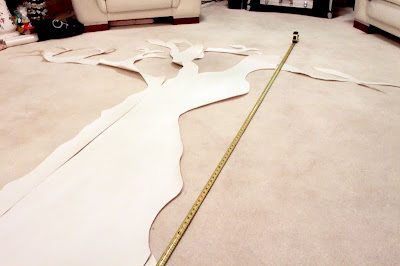The first stage of my special study is almost complete. The hand-built turntable is almost complete. Today we were going to test the weight capacity of this turntable.
But before we were going to test the weight capacity, we ran into a problem. The problem we encountered was that the stepping motor would miss a step which stopped it from rotating smoothly. The stepping motor is programmed to rotate in 4 steps. However because it was missing a step it was not working successfully.
This is a close up photograph of the board that is used to tell the stepping motor how to rotate via steps and what speed.
I have 4 of these blue chips attached to the board, each one represents a step. As I have 4 of these, my stepping motor rotates in 4 steps. However, something was going wrong in order for the stepping motor to miss a step.
On Thursday we spent an hour trying to find out the cause of the this problem, however we were unsuccessful. We then spent another 2 hours on it today and finally managed to figure out the problem. The first problem we figured out was in a line of the board that connected to the stepping motor and to the Arduino and the second problem was in the a couple of wires that were on the board itself.
Before we figured out the problem, we double checked all the wires on the board to see if they were placed in the right place. We also thought that one of the magnets in the stepping motor may have failed to work, and since there is no way to test that, we used another stepping motor but we were having the same problem.
To solve the problem, we replaced the wires that weren't working and we used a different line on the board. As everything was running successfully before, I thought we may encounter this problem again if any of the other wires fail to work later during the progress of the project. However, once we have this working successfully with the weight capacity we would solder the board so this wouldn't happen again.
Once the problem was solved, we tested the weight capacity. Here is a video footage of the turntable holding two Apple laptops that weigh approximately 6.5kg which is more that I will be using. We set the speed of the rotation quite slow in order to make sure that each step was being used.
As you can see from the video footage that it is rotating successfully with the weight of the two Apple laptops. At first, the turntable would stop and jitter in place particular place but that was due to the ball-bearings that were placed randomly. Once I placed the ball-bearings in a track this issue was solved.
We next increased the speed of the rotation slightly. Here is the video footage showing the turntable running smoothly and to a standard speed rate.
As you can see that this hand-built turntable is running smoothly with the weight of 2 Apple laptops. Therefore, it will be able to hold the weight of the projector, which weighs approximately 3.5kg.
The final step for this construction process is to solder all the wires to the board and to built a box for the turntable to sit in and to protect the board and wires so it is portable.
The next stage of my special study is the coding. Via coding in the Arduino program, I will tell the turntable when to rotate, how much degrees to rotate and when to stop, etc. I will also be required to code in Flash because the animations will be created in this software.



![Seasons Unleashed [Hafiza Zaman]](https://blogger.googleusercontent.com/img/b/R29vZ2xl/AVvXsEg11DG1T0cT1UrFVU9awHkApWrrT_WTIVf88AUDEBb1-qIYyuEIdipUVJ1OK_kp4gLY-IZp0K1iU-WYjv3VXs8-8JJu3MOJcNZ0dEGPnA64wKKrpKUyKQp9a8d-0JFBO4A6OUF9qC75qOx8/s1600-r/seasons_logo_1a.png)



















